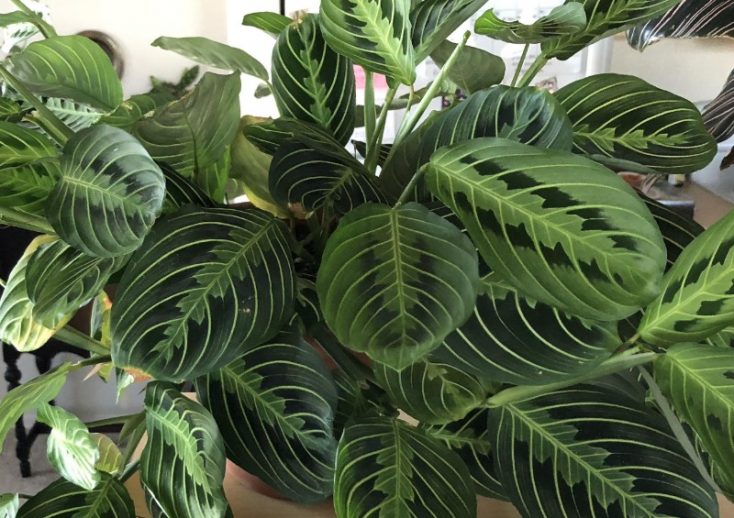Prayer plants (Maranta
How to care for a prayer plant: Prayer plants need well-draining, but constantly moist potting mix, bright indirect light, high humidity and temperatures of 65-75 °F. Fertilize every 2 weeks during the growing season and prune up to three times per year as desired.
Getting these factors right is the key to producing healthy, long-lasting plants. In many cases, prayer plants can live well over thirty years. While learning how to care for a prayer plant requires some attention to detail, it is a task that can be accomplished by beginner or expert gardeners alike.
Caring for a prayer plant is not challenging if you have the right knowledge or experience. This guide will tell you everything you need to know to successfully care for your prayer plant.
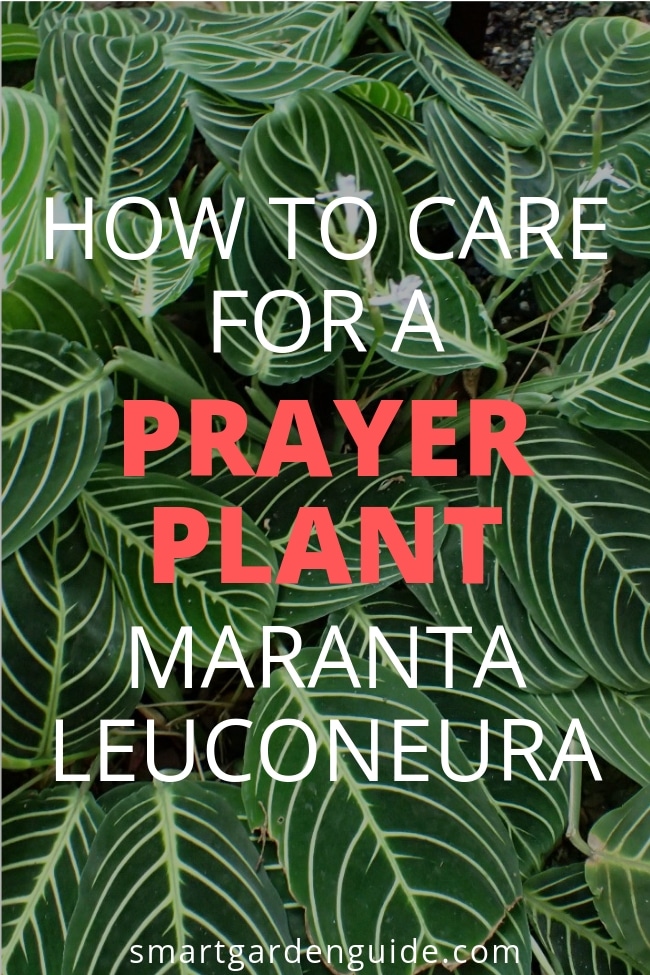
Who Should Grow A Prayer Plant?
Prayer plants are beautiful houseplants and relatively low-maintenance. They can be grown in hanging baskets or larger containers. They spread low and wide, allowing their luscious green foliage to ornament your home and clean the air as they grow.
Prayer plants prefer humid conditions and well-drained soil. Despite their fondness for a tropical environment, prayer plants are rewarding to grow and don’t need
Prayer plants have attractive foliage. They are hardy indoor plants that don’t tend to grow too large for the spaces in which they are planted, unlike similar houseplants that constantly need to be repotted or moved. Prayer plants have variegated foliage but do not produce showy flowers, making them good options as modest ornamental statement pieces.
Indoor vs Outdoor Cultivation
In the wild, prayer plants are found in the tropical rainforests of Brazil. These rhizomatous perennials grow tall and broad (up to twelve inches in height). Leaves grow in clumps, each extending about five inches long. The second part of this plant’s name,
Prayer plants’ leaves lie flat during the day and fold upward at night, as if in prayer. This is done in rhythm with the sun. The leaves point downward or straight during the day, and close vertically at night. This natural process is called nyctinasty, and is triggered by changes in sunlight.
This behavior is believed to have adapted to benefit the plant’s longevity. At night, when the leaves are closed, raindrops can fall through the leaves and reach the roots. This prevents rain from collecting on the leaves, reducing the likelihood of bacterial growth. It also helps the plant retain moisture.
Because the prayer plant is fragile when exposed to cold or very wet conditions, it is challenging to plant outdoors. While prayer plants aren’t typically planted outdoors in most areas of the country, they are often set in containers at grave sites, as they represent prayers and everlasting life for the deceased.
When grown outdoors, prayer plants are low-to-the-ground and produce six-inch long leaves. They also produce small white flowers that stand out sharply against the plant’s green, shiny leaves. This plant has a striking appearance that allows it to stand out on the rainforest floor.
Because prayer plants require minimum temperatures of at least 55 °F, they are really more suited to being grown indoors instead of outside. They prefer bright, indirect sunlight and very high humidity, conditions that can be tough to mimic in most outdoor environments.
Types Of Prayer Plants
There are at least forty different species of prayer plant, with the most common being Maranta
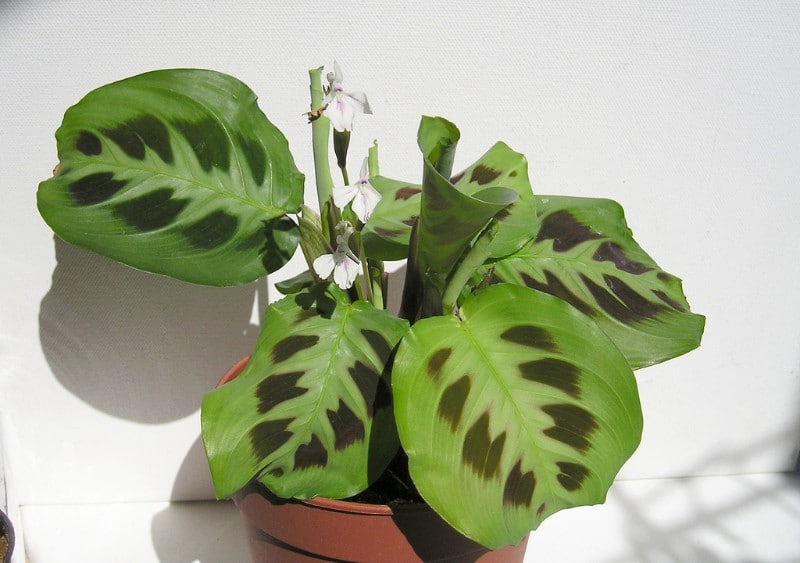
There are numerous sub-cultivars of Maranta leuconeura, including the variety Kerchoveana(also known as rabbit’s foot) and Erythroneura (also known as herringbone plant or red prayer plant). The herringbone plant has purplish markings and deep, blood-red veins.
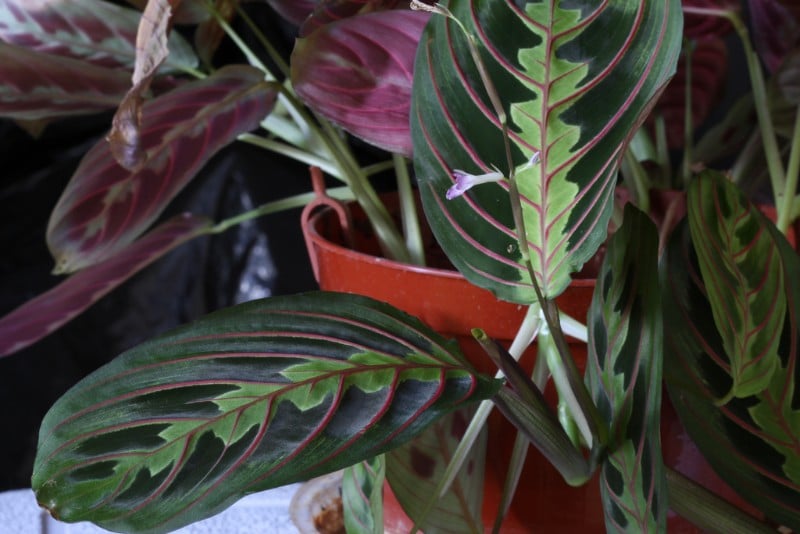
The “Kim” cultivar is a purple-spotted prayer plant, with the leaves possessing an interesting white streaking pattern. It can also have purple spots, giving it a diverse appearance. “Marisela” is another popular cultivar. This plant has lighter green leaves, with the markings a dull shade of light green instead of white. Marisela is a hardy variety of the prayer plant.
The Black Prayer Plant is another common variety. Also known as the Fascinator, this plant produces leaves that are silver or blue (or a combination of the two), with dark green edges and deep purple spots.
Interestingly, prayer plants are often confused with the Pinstripe Calathea. Although these plants are distinct from each other,
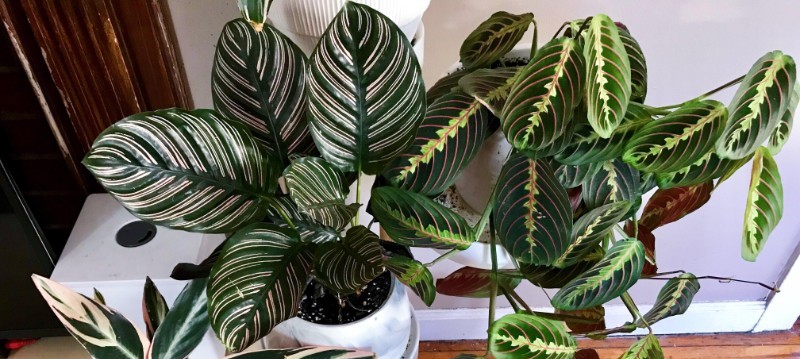
Temperature Requirements For Prayer Plants
Prayer plants, due to their tropical origins, don’t like to be kept in extremely cold or extremely hot temperatures. They thrive when temperatures are around 65-75 °F. Colder temperatures (particularly those dipping below 50 °F) can stunt the plant and cause the leaves to shrivel up and turn brown.
Generally, a room’s ambient temperature is perfect for a prayer plant. You don’t want your prayer plant to be too cold or too hot. When your room is too hot (above 80 °F), your prayer plant will produce few leaves but instead shoot out long, spindly stems. This growth is a response to a lack of moisture in the air, which is common when temperatures rise too high.
As a result, you should avoid placing your prayer plant near a heating or cooling vent. While these can provide necessary ventilation for your prayer plant, they can also dry it out. Drafts and temperature fluctuations can kill your plant, causing its leaves to turn yellow and die back.
Best Location For Your Prayer Plant
Prayer plants can be grown in hanging baskets or in planters. They are not picky about where they are placed but keep in mind that they should not be exposed to direct sunlight. While prayer plants like to be warm, too much sun can scorch and dry out the leaves of the plant. Bright – but indirect – light is best, and when in doubt, remember that prayer plants can survive just fine in areas of lower light.
If you must grow your prayer plant in bright light, try to protect its leaves by hanging a sheer curtain or some other kind of screen against the sun. They should ideally be located in a room that faces the south or west. This will allow light to get to the plant without exposing it to direct sunlight. Your plants will grow rich and green, without becoming spindly or long as they reach for more light.
If your prayer plant’s leaves are faded in color, that’s a sure sign that they are receiving too much sunlight. If there is not enough light, the leaves will close at night and will fail to fully open during the day. This is a protective response that will stunt your plant’s overall growth, and can eventually kill it.
Balance here is key. Place your prayer plant in a corner of the room that receives plenty of indirect sunlight (not on the windowsill) and keep an eye on it to make sure it is adjusting well to its location.
Soil For Prayer Plants
Prayer plants need to be grown in a planting medium that is comprised of two parts peat moss, one part sand, and one part loam. This combination is ideal, ensuring optimal drainage, although you can often get by with a mixed potting soil as well. Prayer plants can tolerate acidic, loam, or clay soils, although a well-draining mixture is best.
If you have soil that does not drain particularly well, you can add perlite or coarse sand to the mixture. Potting soil may not be readily available, so if you want to create your own well-draining mixture you can combine equal parts peat, garden soil, and coarse sand. A pinch of lime dust will help balance the pH of this mixture. Adding rocks or gravel to the bottom of the pot can help improve drainage.
If you make your own potting mix, make sure you are only using clean materials that are free of insects and weed seeds. You don’t necessarily need to purchase soil or potting mix, but you need to make sure your potting mix doesn’t have anything undesirable in it that could lead to more stress for your plant later on down the road.
Watering Your Prayer Plant
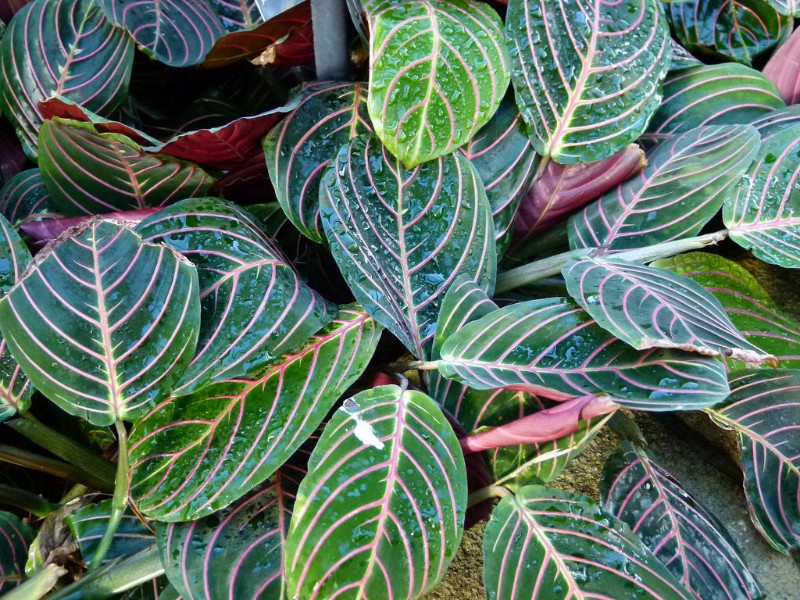
What’s more important than soil for your prayer plant is ensuring that it has optimal drainage. Prayer plants have exceptionally fine roots that grow in a shallow (yet dense) spread. They are susceptible to root rot, so you need to make sure the planting medium and container are both well-draining. If your plant’s container does not have a well-draining bottom, consider drilling extra holes or using an even lighter planting medium.
You want to make sure you water well enough so that your soil does not become dried out, but not so often that it becomes soggy. When you touch the soil of your prayer plant, it should be slightly damp to the touch. Use room temperature water to hydrate your plant, allowing the plant time to adjust to the water. Water that is too cold will chill the roots of your plant and cause stress, which can shock its system and result in leaf-dropping behavior.
Try to water the plant in the morning. Many people are already aware of this watering tip if they have outdoor plants or a lawn that needs to be regularly watered. However, the same rule applies for houseplants. Watering in the morning will give your plant an entire day to absorb the moisture, and will allow excess water on the leaves to evaporate.
If you notice that your plant has begun to develop dark spots on its leaves, cut off the damaged leaves at the base and throw them a
Exactly how much water your plant will need will be dependent on so many circumstances, so a regular timeline is something only you can determine once you get your plant home. Just because your plant is thirsty one week doesn’t mean it will require the exact amount of water next week. While your plant will need lots of water in the spring and summer months (periods of rapid growth and heat), you can reduce your watering in the winter months.
Whenever possible, use filtered water to water your plants. This will help prevent contamination by chemicals such as chlorine or fluoride, which can negatively impact your plant and affect its overall growth. If you don’t have access to a water filter, letting the water sit for a day or two before using it can also help some of the chemicals dissipate.
Hard water can also be damaging to a prayer plant. It contains chemicals that, in seriously unbalanced water, can harm your plant or, at the very least, stunt its growth. It’s important that you also empty your watering containers or saucers regularly. Stagnant water can contain harmful microbes that can affect your plant’s growth.
Check your plant every day, touching the top of the potting soil to determine its wetness. Your plant needs to be watered when the top of the potting soil is just beginning to dry out. You should never allow the soil to dry out completely, as this can cause your plant to die. Your leaves will turn yellow and fall of the plant.
If you are away or for whatever reason forget to water your plant, don’t try to compensate for the mixed watering by providing more water. Instead, return to your regular watering schedule and try to keep track of your watering in the future.
Humidity for A Prayer Plant
As a tropical plant, the prayer plant requires a very humid environment. If its leaves are too dry, they will turn brown and begin to drop off. Keep in mind that your plant can be deprived of humidity even if you are watering it regularly. If you live in a location that gets very cold winters, the cold will sap even the air inside your house of much of its moisture. The same goes for individuals who have their plants in drafty or stuffy locations.
Providing the proper humidity for your prayer plant, particularly in the winter, can be challenging because you don’t necessarily need to provide more water to your plant during the colder months. In fact, prayer plants are prone to over-watering during the colder months of the year. So what’s a gardener to do?
Installing a humidifier can help increase the humidity when the winter air dries out the indoor environment, or when temperatures rise above 65 degrees in the summer. If a humidifier is not an option, you can also place your prayer plant in the bathroom. The steam from the shower and bath will help add humidity to the air. However, if your bathroom is devoid of windows or other bright, natural (but indirect!) light, it may not be the best choice.
You can also spritz your plant’s leaves with a spray bottle. Avoid watering directly on the leaves, as too much water can cause fungal issues. However, a light mist once or twice a day won’t dampen your leaves to the point of rot, but it will hydrate them so they can continue to absorb nutrients from the soil.
In some cases, placing your prayer plant near other groups of plants can help, as plants naturally produce water as they grow. You could place a bowl of water near the plant, or place it on a tray filled with water and small stones. By placing your plant near sources of moisture instead of directly on or in them, you will help provide your plant with adequate moisture without soaking your plants and causing fungal problems.
Remember that another major issue with houseplants is the lack of exposure to the outside elements. While this can be beneficial in some regards (you don’t have to worry about damaging winds or outdoor pests getting after your plants), it also means that your plants don’t have access to natural elements like cool breezes or soil microbes.
The lack of a breeze can result in a lack of airflow to your plants. This is particularly detrimental when it involves your plants’ roots. Plants that do not have enough air will be stunted, with many developing
The best way to provide adequate airflow for your plant is to avoid placing it on a heating or cooling vent, while at the same time adding a supplementary source of air, like a slowly rotating fan. This will help keep the air moving and prevent it from becoming stagnant, while also improving the overall health of your plant.
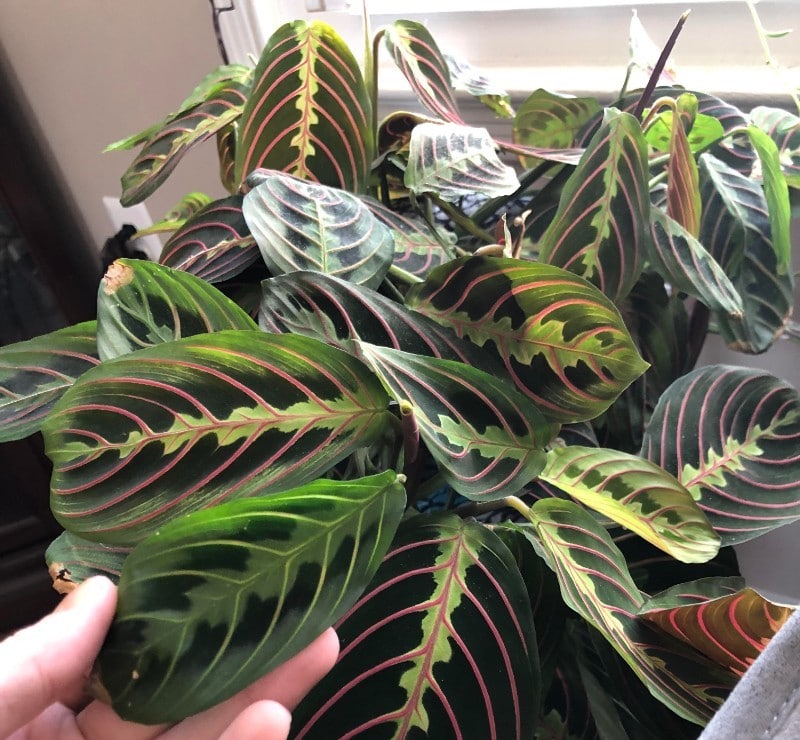
Fertilizing Your Prayer Plant
In the early spring, you should begin a regular fertilizing schedule for your prayer plant. The best frequency is once every two weeks. You can fertilize all throughout the summer months and moving into the fall but should stop during the winter months, when your plant will enter a natural dormancy period.
When you fertilize, use a water-soluble houseplant fertilizer and dilute it to half-strength. This is usually about half a teaspoon of fertilizer per gallon of water, but it could be higher or lower depending on the specific manufacturer of your fertilizer. Whatever the instructions list as a recommended dilution rate, reduce that amount by another half.
Try to find a balanced houseplant fertilizer. Keep in mind that organic fertilizers can be used, like worm or compost tea, but you want to be careful to ensure that all nutrient levels are balanced and not tipped too far in favor of one nutrient (such as nitrogen, which tends to be present in higher contents in things like aged compost or manure).
No matter what kind of fertilizer you choose, remember that too little fertilizer will cause your plant to experience stunted growth – or lack of growth entirely. Too much fertilizer, on the other hand, will cause your leaves to become brown and can even burn your roots. You need to find a happy medium in terms of fertilizing, allowing your plant plenty of time to access nutrients and to develop vigorously-growing, bright-green stems and leaves.
Pruning Your Prayer Plant
Pruning a prayer plant can help ensure more vigorous growth. This is easy to do. All you need to do is clip your stems right above the leaf nodes using a sterilized pair of garden scissors. Your plant will send out new shoots below the cut area, allowing your plant to develop a more bushy appearance instead of sending growing resources to dead or dying parts of the plant.
You can prune several times a year (two or three times is best). By using sharp, clean scissors, you will reduce the likelihood of damaging your plant as well as of spreading disease. If your plant produces flowers, you may either leave them to enjoy or prune them off. These flowers tend to blossom for only a few days at a time before falling off, at which point the plant will begin to make new ones. The flowers do not stunt the plant’s growth in any way, and can add a nice decorative touch to your room.
You may find that your prayer plant’s leaves become dusty from time to time. This is nothing to be concerned about. You can clean the leaves every now and then with a dry cloth to help remove dust or any other built-up debris.
Propagation
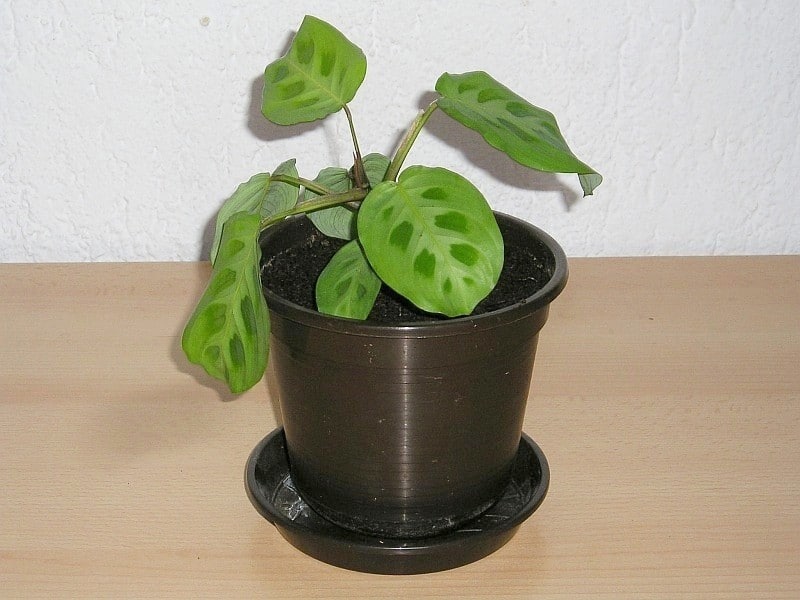
Prayer plants are easiest to propagate in the spring, when you are in the process of repotting your plant. You can take stem cuttings or simply divide your plant.
Cuttings should be taken just beneath the nodes that are closest to the bottom of the stem and then placed in a mixture of peat and perlite. Make sure the cuttings are kept adequately moist after transplanting. Put them in a sunny location, and cover them with plastic to help retain moisture. Once they are set in place, you should poke a few holes in the plastic cover. This will help allow air in while also promoting fresh growth.
If a piece of your prayer plant breaks off, you can dip it into rooting hormone and place it in distilled water. Change the water every other day, watching for signs of growth. Once your roots have grown to about an inch in length, you can take the plant out to place it in soil. Be careful to make sure there is at least some piece of stem on the leaves, or the plant will not take root. You can also place the pieces in soil directly, although the success rate may not be as high.
Repotting your Plant
Prayer plants won’t need to be repotted often, but when they become root-bound, they will grow much more slowly. This will indicate that it is time to change containers. If you decide to repot your prayer plant, you should only do so in the spring or summer months. This will help prevent cold weather shock during the plant’s dormant period. When your container is full of roots, you will notice that your potting mix dries out quickly and your prayer plant grows slowly.
To repot, choose a container that is at least an inch or two wider than the existing pot. Remove your plant from its current home and place it in the new pot (make sure you add a bit of extra soil mix, too). Water well for the first few days after transplanting.
If you are interested in propagating your plant, you can divide it into smaller plants. To do this, simply shake the soil off the roots and work them apart. Each new plant will have a healthy, large mass of roots, as well as several stems. You can replant these smaller plants in shallow pots.
When you
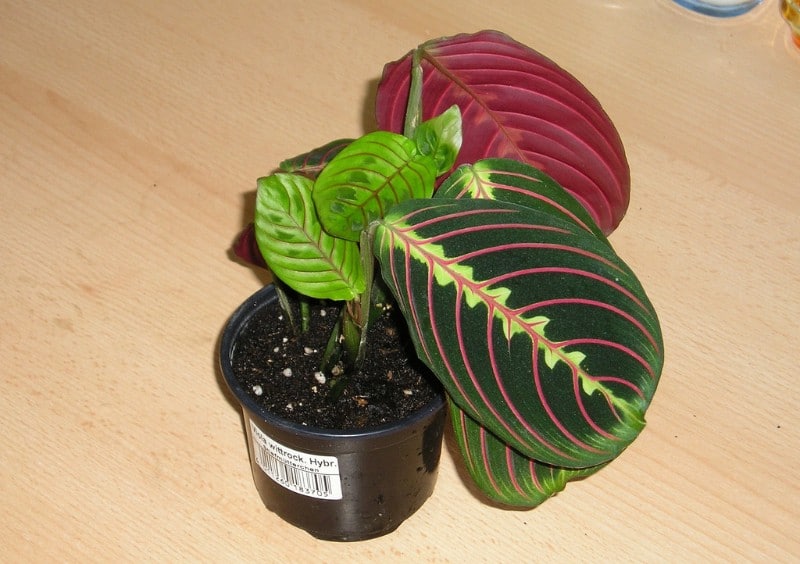
Medicinal Properties of Prayer Plants
Interestingly, the chemical rosmarinic acid is found in prayer plants. This chemical is also found in certain ferns and hornworts, as well as some herbs like basil. It is also the active ingredient in rosemary.
This chemical produces several antioxidant and anti-inflammatory effects. It can be inhaled or absorbed through the skin. Rosmarinic acid can be effective in reducing your body’s histamine response to pollen allergies, as well as reducing symptoms like nasal congestion and atopic dermatitis.
Common Prayer Plant Issues
Leaf spot, also known as
You’ll know your plant has leaf spot if you notice that water-soaked spots are appearing all over your plant’s leaves. These yellow spots spread quickly, eventually looking tan in appearance. They may also have small yellow halos.
Unfortunately, leaf spot can be difficult to reverse once set in. That being said, maintaining a regular, even watering schedule can help prevent this disease in the first place. It is common in plants that are overwatered, or in those whose leaves are frequently covered in standing water.
Yellowing leaves are also common in prayer plants, typically caused by environmental stress, fungal disease, or viruses. Often, yellowing leaves are caused by something that can be easily adjusted, like the location of the plant or the type of fertilizer you are using. Other times, however, you may need to implement a more targeted approach.
More often than not, yellow leaves are a sign that your plant is being exposed to too much bright light. Move your plant to a new location, or install a sun screen to help filter the light. Excessive amounts of phosphate or fluoride, sometimes found in tap water, can also burn the tips of your leaves. Using filtered water or allowing your tap water to sit before using can help reduce this effect.
Chlorosis is another cause of yellowing foliage and is more common in younger leaves. This disease is essentially an iron deficiency, and it can cause death if not treated correctly.
Chlorosis can be caused by a high soil pH or a soil that is too clay-like in structure. Soil that is overly compact or wet, or contains too much phosphorus, can also have too little iron.
While chlorosis less likely to occur in a pot-bound plant, it can frequently arise as the result of too-wet soil. If your soil is compacted or if you have been watering it heavily, back off. You may need to add an iron supplement until the nutrient balance of the soil rights itself.
Cucumber mosaic virus is another common culprit of yellowing leaves in the prayer plant. If you have some yellow spots with some healthy green tissue, this virus could be at work. You might notice that newer leaves are emerging, but are small and misshapen, while older leaves are developing yellow line patterns.
Sadly,
Pests
Prayer plants are prone to the same pests as other household plants. The most common ones are spider mites. These pests thrive in the plant’s bushy leaves, but luckily they hate excess humidity. Because prayer plants thrive when exposed to extra moisture in the air, keeping your humidity high is an easy way to help your plant thrive and keep pests at bay.
Spider mites are tough to see with the naked eye, but they can cause your plant to stop growing altogether. You may find webbing on your plants, and upon closer inspection, see the tiny mites on your plant’s leaves. You can use ladybugs or other predatory insects to get rid of the mites, or even use an insecticidal oil like neem oil.
Mealybugs are another source of stress for prayer plant owners. These pests produce a white residue on a plant’s leaves that looks not unlike cotton. It is usually found on the stems and leaves and can be either the egg sacs of these
If you find this residue on your plants, make sure you isolate your plant from others immediately. Scrape away any spots you find, and then treat the plant with a solution of three parts of water, one part alcohol, and a splash of dish soap. Let the plant sit for a few days and repeat the process. Neem oil or commercial pesticides are also effective at getting rid of mealybugs.
When you first get your prayer plant home, make sure you inspect it carefully before bringing it inside. Particularly if you are purchasing your plant from a nursery or another third-party plant retailer, you need to make sure your plants aren’t harboring any unwanted visitors as you move them inside your home.
As your plants are growing, keep an eye out and inspect them regularly (perhaps during feeding or watering periods) for any signs of disease or pests. These issues usually crop up by surprise, so being vigilant can help you detect them early to minimize further damage.
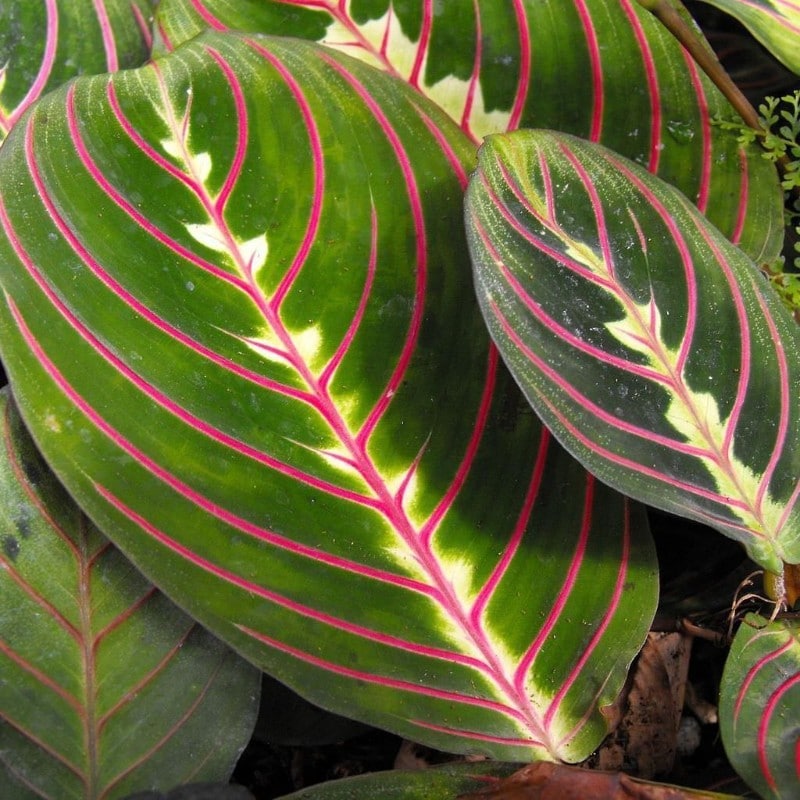
Is A Prayer Plant Right For Me?
If you like to garden and are interested in a vibrant, verdant new addition to your home, then yes! A prayer plant is absolutely the right houseplant for you. These plants can live for many years, with some lasting several decades or more.
As long as you water and feed your plant regularly, providing it with plenty of space to grow – and, of course, lots of
Why are my prayer plant’s leaves turning brown?
Leaves that have turned brown or are curling up may indicate that your plant is receiving too much light. Try moving your plant to a new location. However, browned leaves can also be caused by chlorine in tap water. Use filtered water or allow tap water to sit for twenty-four hours before using.
Is the prayer plant poisonous?
Prayer plants are not toxic to humans, dogs, or cats.

